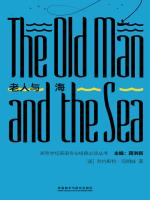The old man
In 1952, Hemingway published his best work "The Old Man and the Sea". This is a treasure in the treasure house of world literature, and also a treasure in all Hemingway's creations.
The book sold amazingly within 48 hours of publication and won the Pulitzer Prize for Literature that year. In 1954, Hemingway won the Nobel Prize for Literature because of his "proficiency in narrative art, which is prominently shown in his recent book "The Old Man and the Sea"; and also because of his influence on contemporary styles." "Every sentence and every paragraph should be written as concisely as possible." This is one of the tenets of Hemingway's writing.
More films have been made of his works than any other winner. When he was announced as that year's Pulitzer Prize winner, the critics were unanimous. "Man can be destroyed without
can be defeated. What Hai Mingcheng said in "The Old Man and the Sea" not only moved the readers, but also conquered the critics.
The novel uses a realistic approach to show the elegant demeanor of the old fisherman Rothiago under heavy pressure. This spiritually invincible man has become one of the most famous "tough guy" images in the history of literature.
For "The Old Man and the Sea", which has been translated into dozens of languages, Hemingway himself believes that "it is the best work that can be written in this life".
This is a novel describing the struggle between man and nature. The old man fought at sea for two days and two nights and finally only won an empty fish rack. The implication of the work is symbolic, the old man is honored even though he is defeated. Just as the old man said: Man is not born to be defeated, man can be destroyed, but he cannot be defeated." This sentence is Hemingway's confession, and it is also a symbol of Hemingway's tough guy spirit. Over the years, this seems to have become a sentence Words of wisdom.
Hemingway was a writer who loved hunting and fishing. He has been to the battlefields of the first and second world wars, he has 237 pieces of shrapnel in his body, stitches in his head, he has suffered two plane crashes in Africa, and his vision and health have deteriorated due to severe concussions. This is Hemingway. His experience gave birth to his tough guy character. In his novels, themes such as boxing, bullfighting, hunting, fishing, and war repeatedly appear, all of which are symbols of strength. Of course, there's alcohol, violence, sex, loneliness and death in the mix.
Hemingway let us know how important a person's experience is, which is an invaluable wealth. The tough guys that Hemingway wrote before he created "The Old Man and the Sea" are just the toughness of their characters.
The attraction comes entirely from the unique character of the tough guy, and their value is only rare in the tough guy character.
But the lonely old fisherman Santiago in "The Old Man and the Sea" is no longer just a tough guy. The spiritual value embodied in him is completely the modern echo of the tragic spirit of ancient Greece. In "The Old Man and the Sea", Hemingway finally found the soul for his beloved tough guy, and this soul is the eternal value of human beings. Therefore, in The Old Man and the Sea, the tough character of Santiago has become the surface of the novel, and praising the eternal value of human beings through Santiago's tough character has become the real theme of the novel. Santiago has been out at sea for 84 consecutive days without catching a single fish. But, "those eyes, as blue as the sea, are happy and not depressed." The child who followed Santiago to go fishing, talking about his father calling him to another boat, said: "He doesn't have much self-confidence." "Yes." The old man said, "But we do, don't you think so?" Brother Santiye's self-confidence is absolute self-confidence, self-confidence that does not change with changes in the environment. Self-confidence without comparing yourself with others. In Santiago's survival philosophy, even if one encounters extreme bad luck, one should still maintain self-confidence. Because of Santiago's absolute self-confidence, he expressed complete tolerance and understanding for the child being called away. Here, Hemingway demonstrates the link between confidence and tolerance.
The main content of "The Old Man and the Sea" is to describe the lonely old fisherman Santiago in the vast sea with the big marlin and all kinds of fish.
The experience of shark entanglement and fighting for three days and three nights, through Hemingway's incisive description, we fully feel the tragedy and nobility of Santiago's desperate struggle against fate. The old man finally dragged home only
It is the skeleton of an 18-foot fish, the only thing intact on the skeleton is the head and beautiful tail.
From a material point of view, the old man struggled for a day and three nights and the result was a failure; but in terms of human spirit, self-confidence and self-esteem, and courage to fight with all his strength against fate, Santiago has achieved success.
victory.
In the final analysis, the real victory of man can only be the victory of spirit. No matter how great a person's material achievements are, he cannot win our lofty respect, but only the victory of spirit and spirit can make us
We were so moved that we, like the children who followed the old man, wept for his tragedy.




 京公网安备 11010802032529号
京公网安备 11010802032529号